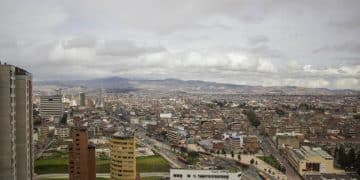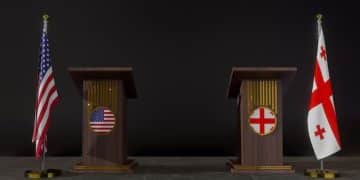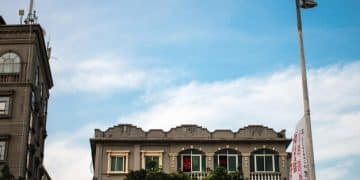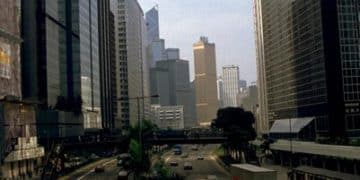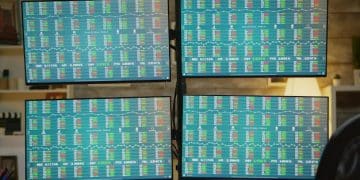Peru’s Political Stability: Impact on US Long-Term Investments

Recent political stability in Peru has significant implications for long-term US investments, potentially fostering a more predictable economic environment and attracting increased foreign capital.
The recent period of relative political stability in Peru has sparked considerable interest among international investors, particularly those in the United States. But what does the recent political stability in Peru mean for long-term US investments? This article analyzes the potential benefits and remaining challenges for US companies considering ventures in the Peruvian market.
Understanding Peru’s Path to Political Stability
Peru has experienced a tumultuous political landscape in recent years, marked by presidential impeachments and widespread social unrest. However, recent developments suggest a shift towards greater stability. Understanding the factors that contributed to this stability is crucial for assessing the investment climate.
Key Factors Contributing to Stability
Several key factors have contributed to the recent period of relative political stability in Peru. These include a combination of institutional adjustments, societal responses, and economic realities.
- Constitutional Reforms: Adjustments to the constitution have aimed to streamline governmental processes and reduce the likelihood of political gridlock.
- Civil Society Engagement: Increased participation of civil society organizations in political discourse has fostered greater accountability and transparency.
- Economic Pragmatism: A growing consensus among political actors regarding the need for sound economic policies has helped depoliticize economic management.
Furthermore, decreasing polarization among various political actors has contributed to a more consistent political climate. Open dialogues and collaborations have taken the place of the conflicts and power struggles of earlier times. This new environment helps create confidence, not only within the country, but also abroad, amongst the international investment community, which can now consider Peru as a viable investment destination.
Also, the Peruvian people have been increasingly more decisive in their desire for a more stable government and this has influenced political actors to promote the country’s long-term interests instead of succumbing to short-sighted political tactics.

Assessing the Benefits for US Investors
Political stability is a cornerstone for fostering a conducive environment for foreign investment. For US investors, a stable Peru translates into several potential benefits, ranging from reduced risks to enhanced opportunities.
Reduced Risks and Increased Confidence
A stable political environment reduces the risks associated with policy volatility and abrupt regulatory changes. This predictability enhances investor confidence, which is critical for long-term investments.
With a more stable political landscape, US companies can expect policies to remain consistent and predictable, leading to more accurate financial projections. This, in turn, can lower capital costs and increase the feasibility of long-term projects.
Better political stability will translate into economic incentives and the creation of special zones for economic activity, which will be welcome news for investors that wish to expand, relocate or simply open new business locations, benefitting from less bureaucracy and lower taxes.
Opportunities in Key Sectors
Peru’s economy is diversified, with key sectors such as mining, agriculture, and tourism presenting attractive opportunities for US investors. Political stability can unlock the full potential of these sectors.
For example, the mining sector, a significant contributor to Peru’s GDP, benefits from stable regulations that encourage exploration and extraction activities. Similarly, the agriculture sector thrives with consistent trade policies that facilitate exports to the US and other markets.
Tourism is also another sector that can considerably benefit from the effects of better political stability, as tourist businesses will have less perceived risks in the development of related infrastructure like hotels, restaurants and various services that tourists tend to consume.
In conclusion, a more stable Peru leads to lower the risk premiums, increased investor confidence, and creates exciting opportunities for US investors, particularly in top sectors that make up the Peruvian economy.
Navigating the Remaining Challenges
While Peru has made significant strides towards political stability, challenges remain and must be acknowledged. Awareness of these challenges is crucial for US investors to navigate the Peruvian market successfully.
Corruption and Bureaucracy
Despite efforts to combat corruption, it remains a persistent issue in Peru. Bureaucratic hurdles can also hinder investment projects. Addressing these challenges requires vigilance and compliance with ethical business practices.
By adopting best practices, US companies can help mitigate the effects of corruption and bureaucratic delays. Working with local partners who have a deep understanding of the regulatory landscape is important.
- Transparency: Promote transparent business operations.
- Compliance: Adhere to both US and Peruvian anti-corruption laws.
- Due Diligence: Conduct thorough due diligence on potential partners.
Likewise, the Peruvian government is implementing more and more measures to combat corruption and promote transparency. US investors that choose Peru will be more protected by such measures.

Strategies for Successful US Investment in Peru
To achieve successful long-term US investments, a strategic approach is essential. This includes conducting thorough due diligence, building strong local partnerships, and engaging with relevant stakeholders.
Building Local Partnerships
Establishing strong relationships with local partners can provide invaluable insights into the Peruvian market and help navigate regulatory complexities. Local partners can also facilitate engagement with government agencies and community stakeholders.
When venturing into the Peruvian market, US investors will be better served if they associate with local partners that are more familiar with the unwritten rules of local business, but these rules have to be under the umbrella of strict ethical and legal compliance.
Engaging with Stakeholders
Engaging with various stakeholders, including government officials, community leaders, and civil society organizations, is crucial for fostering a positive investment environment. This engagement can help address concerns and build trust.
US companies should actively seek opportunities to contribute to the local community through corporate social responsibility initiatives. This will generate more trust and goodwill that can lead to a better business environment. These initiatives may include things like supporting health, education, and infrastructure projects.
Adopting Sustainable Practices
Reflecting on the strategies that are more likely to produce long lasting business relations, US companies must focus on developing sustainable practices in their Peruvian endeavors. Environmental stewardship, cultural sensitivity, and ethical labor standards are key to responsible business practices that resonate with the local populace.
These practices are conducive to building strong communities, ensuring access to opportunities, and protecting environmental wellbeing. Incorporating these standards creates a positive impact, supports environmental preservation, and contributes towards community development.
In conclusion, US investments that focus on partnering with locals, promote stakeholder engagement, and strive for environmental and social sustainability, will gain a competitive edge and the support of society, hence, making them more attractive and profitable.
The Future Outlook for US-Peru Investments
The future outlook for US investments in Peru remains positive, provided that Peru can sustain its political stability and continue to implement reforms that promote economic growth. Here are some key indicators to watch in the coming years.
Economic Reforms and Policy Consistency
Ongoing economic reforms aimed at improving competitiveness and attracting foreign investment will be crucial. Policy consistency and transparency are also vital for maintaining investor confidence.
For example, reforms in the tax system to simplify compliance and incentivize investment. Also, improvements in infrastructure projects to reduce transportation costs and facilitate trade, are extremely welcome and will be factors in any US firm’s decision to relocate, expand or simply start operations in the Peruvian market.
- Tax Reforms: Monitor changes to the tax code and their impact on investment returns.
- Infrastructure Projects: Track progress on key infrastructure projects that improve connectivity and logistics.
Trade and Investment Agreements
Existing trade and investment agreements between the US and Peru provide a solid foundation for economic cooperation. Exploring opportunities to expand these agreements can further enhance investment flows.
For instance, discussions to reduce trade barriers for specific goods or services. Also, initiatives to facilitate the exchange of technology and expertise between US and Peruvian firms are very welcomed.
The Peruvian government has recently stated intentions to further strengthen ties and agreements with the US, thus ensuring more and better business conditions for US companies that wish to explore the Peruvian market as a profitable and viable investment destination.
As can be seen, there is much optimism surrounding the prospects of US investments in Peru, providing that it carries on with political stability, and that it applies the appropriate adjustments to continue fostering economic growth for all parties involved. By keeping an eye on the important developments and taking measures to address future issues, Peru can strongly turn itself into a center for American investments.
| Key Point | Brief Description |
|---|---|
| ✅ Political Stability | Reduces risks and increases investor confidence. |
| ⛏️ Key Sectors | Offers opportunities in mining, agriculture, and tourism. |
| 🤝 Local Partnerships | Essential for navigating regulations. |
| 📈 Future Outlook | Positive with continued reforms and trade agreements. |
FAQ
▼
Political stability reduces risks and policy volatility, enhancing investor confidence. A stable government ensures consistent economic policies, making Peru a more attractive destination for US investments.
▼
Key sectors include mining, agriculture, and tourism. These sectors benefit from stable regulations and policies that encourage exploration, production, and export activities, providing significant potential for returns on investments.
▼
Persistent challenges include corruption and bureaucracy. Navigating these issues requires adherence to ethical business practices, transparency, and working with local partners who understand the regulatory landscape.
▼
Success strategies involve building strong local partnerships, engaging with stakeholders, and adopting sustainable business practices. These strategies help navigate market complexities and foster a positive investment environment.
▼
The outlook is positive if Peru maintains political stability and implements economic reforms. Monitoring economic policies, infrastructure projects, and trade agreements will be crucial for investors.
Conclusion
In conclusion, recent improvements in the political environment have rendered Peru a more inviting location for incoming US investments, as long as future stability holds, and both countries promote ethical and sustainable business practices. By examining potential investment prospects, working together with local partners, and keeping an eye on changing political and economic trends, US corporations can enjoy long term returns, supporting economic growth for both countries.
